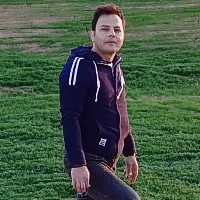Stratigrapghy at Tepe Namashir of the Baneh:Western Iran
Author(s):
Abstract:
Tappeh Namashir (E 45° 44 4.00 N 36° 7 56.00, 1336m ASL), is located beneath the village of Namashir at 33 km north west of Baneh city (NW Kurdistan province, western Iran). The excavation of Tappeh Namashir was carried out under the directions of Mr. Zahed Karimi in June and July, 2010. Excavators opened 6 operations (A, B, C, D, E, and F). The aim of excavation in these two operations of A (3×2 m) and B (2×2 m) in the center of this site is studying the stratigraphy of the archaeological deposits. Tappeh Namashir consists of 5 main layers. On the basis of this excavation, its material culture belongs to the Chalcolithic (layers V, IV and III), Iron Age (layer II) and Islamic periods (layer I). This paper introduces the material culture of this stratigraphy. Layer I with late Islamic pottery constitutes the latest occupation on Tepe Namashir represented by brown-red pottery with a highly mineral tempered. Layer II is belonging to the Iron Age; The pottery of this layer represented by bowl with everted short necked and round body, shallow tray, carinated bowl with everted rim with yellowish or reddish slip and polished surface treatment without any decoration. Layer III Namashir is characterized by late chalcolithic chaff-tempered/chaff-faced wares. Most of the pottery production is brown, buff, and gray, chaff-tempered and chaff-faced. Few manipulated wares are seen in this period which their body different from Dalma wares and resemble to other late chalcolithic wares of this layer. The shape repertoire mainly consists of simple everted bowls, open bowl with incurved vessel wall, open bowls, open or shallow bowl with straight vessel walls, jar with wide shoulder and short everted neck, jar with overhanging rims, small pottery, carinated pottery and some of the most distinctive forms of ceramic decoration in the late chalcolithic period are incised chevron and zigzag patterns and deep, regular comb incised horizontal bands. Late chalcolithic potteries of Tepe Namashir is resemble to Northwestern Iran and Northern Mesopotamia and different from other region such as Susiana. Layer IV of Namshir is characterized by black on buff painted wares and few impressed potteries. Black on buff potteries resembles to Seh Gabi, Tappeh Siah bid and Ubaid pottery sherds. The pottery of this layer is often a buff color and the four main pottery groups are distinguished on the basis of shape and size: bowls with open rim, globular simple or painted pots, trays and perforated bowls. Geometric decorations cover the exterior and interior of the pottery in addition to surface-manipulation on the exterior of the pottery, with handled vessels, and finger impression on the surface of pottery. Layer Namashir V is the earliest layers of Tepe Namashir, which cut down into the sedimentary virgin soil and related to the Dalma period. Dalma streaky and Dalma painted wares appear to have originated earlier than the Dalma impressed wares, a situation resembling the internal stratification found at the Dalma Tepe, Godin Tepe and Tepe Namashir. The geometric decoration of pottery consists of rows of triangles, hatch lines, streaky paint, painted solid, cross-hatched, hanged triangles, paralleled bands and circular patterns. Most of these decorations are typical for Dalma tradition wares. The material culture of Tepe Namashir shows that there are similarities in the potteries with those in the northwest, west and western half of the Central Iranian Plateau and northern Mesopotamia. The great amount of obsidian lithic and debris is indicative of the interaction of Tepe Namashir with other region. As per available data in this excavation, the region of northwestern Kurdistan Province has an important role in the interaction between regions of Iran, Mesopotamia and Anatolia in the chalcolithic period. In addition to the pottery, other materials such as architectural materials, lithic tools, clay spindle whorls, stone objects, mortars, stone rings and copper slag were seen.
Keywords:
Language:
Persian
Published:
Iranian Archaeological Research Journal, Volume:7 Issue: 12, 2017
Pages:
43 to 62
magiran.com/p1743494
دانلود و مطالعه متن این مقاله با یکی از روشهای زیر امکان پذیر است:
اشتراک شخصی
با عضویت و پرداخت آنلاین حق اشتراک یکساله به مبلغ 1,390,000ريال میتوانید 70 عنوان مطلب دانلود کنید!
اشتراک سازمانی
به کتابخانه دانشگاه یا محل کار خود پیشنهاد کنید تا اشتراک سازمانی این پایگاه را برای دسترسی نامحدود همه کاربران به متن مطالب تهیه نمایند!
توجه!
- حق عضویت دریافتی صرف حمایت از نشریات عضو و نگهداری، تکمیل و توسعه مگیران میشود.
- پرداخت حق اشتراک و دانلود مقالات اجازه بازنشر آن در سایر رسانههای چاپی و دیجیتال را به کاربر نمیدهد.
In order to view content subscription is required
Personal subscription
Subscribe magiran.com for 70 € euros via PayPal and download 70 articles during a year.
Organization subscription
Please contact us to subscribe your university or library for unlimited access!



